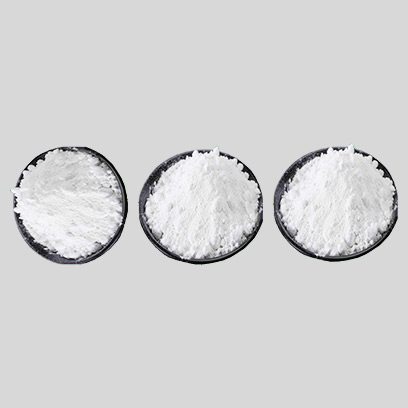
Ліст . 24, 2024 20:44 Back to list
Exploration of Anatase Titanium Dioxide Properties and Applications in Modern Technology
The Significance of Anatase Type TiO2 in Modern Applications
Titanium dioxide (TiO2) is a widely utilized semiconductor material known for its unique properties, including high photocatalytic activity, stability, non-toxicity, and abundance. Among its several polymorphs, anatase type TiO2 has garnered significant attention in various fields, particularly in photocatalysis, solar energy conversion, and environmental remediation. This article explores the distinct characteristics of anatase TiO2, its applications, and the ongoing research aimed at enhancing its functionality.
Characteristics of Anatase TiO2
Anatase TiO2 is one of the three primary crystalline forms of titanium dioxide, the others being rutile and brookite. Each form exhibits different crystal structures and, consequently, diverse properties. Anatase is characterized by its tetragonal crystal structure, which offers a higher surface area compared to rutile. This increased surface area is critical for photocatalytic processes, as it provides more active sites for chemical reactions.
Another notable feature of anatase TiO2 is its superior photocatalytic properties. When exposed to ultraviolet (UV) light, anatase can generate electron-hole pairs that are essential for initiating chemical reactions. The photogenerated electrons can reduce various pollutants, while the holes can oxidize organic compounds. This dual action makes anatase TiO2 an ideal candidate for applications in environmental cleaning and photochemical conversions.
Applications of Anatase TiO2
1. Photocatalysis One of the most significant applications of anatase TiO2 is in the field of photocatalysis, where it is employed to degrade pollutants in air and water. For instance, anatase TiO2 can effectively break down harmful organic contaminants such as dyes, pesticides, and pharmaceuticals under UV light exposure. Its high activity and selectivity make it a vital component in wastewater treatment technologies.
2. Solar Energy Conversion Anatase TiO2 plays a crucial role in the development of dye-sensitized solar cells (DSSCs). In DSSCs, anatase serves as a semiconductor on which dye molecules are adsorbed. When light hits the dye, it excites electrons, which are transferred to the anatase surface, generating electricity. The efficiency of DSSCs can be significantly enhanced by optimizing the properties and morphology of anatase particles.
anatase type tio2

3. Self-Cleaning Surfaces Another fascinating application of anatase TiO2 is in the production of self-cleaning surfaces. Coating materials with anatase TiO2 allows surfaces to degrade organic dirt and stains upon exposure to sunlight. This property is particularly useful in architectural coatings, glass surfaces, and various consumer products, as it reduces the need for chemical cleaning agents.
4. Antimicrobial Agents The photocatalytic properties of anatase TiO2 also lend it to use as an antibacterial agent. When exposed to UV light, anatase can generate reactive oxygen species (ROS) that attack and deactivate a wide range of microorganisms, including bacteria and viruses. This application is especially relevant in healthcare settings and food safety, where maintaining hygiene is paramount.
Challenges and Future Directions
Despite its numerous advantages, the practical application of anatase TiO2 faces some challenges. One significant limitation is its intrinsic property of only being active under UV light. To address this, researchers are focusing on doping anatase with various metals or non-metals to extend its absorption spectrum into the visible light range. This modification can enhance its photocatalytic efficiency under solar irradiation, making it more viable for widespread application.
Additionally, the synthesis methods of anatase TiO2 can affect its properties, including particle size, morphology, and crystallinity. Researchers are continually exploring new synthesis routes and strategies to produce anatase with tailored features that meet specific application requirements.
Conclusion
Anatase type TiO2 is a versatile and valuable material with remarkable properties that make it suitable for various innovative applications, from environmental remediation to renewable energy. As research continues to explore ways to optimize its functionality and overcome limitations, anatase TiO2 is poised to play an even more significant role in tackling some of the pressing challenges of our time, such as pollution and sustainable energy production. Its ongoing development reflects the intersection of chemistry, materials science, and environmental engineering, promising a cleaner and more sustainable future.
-
Premium 6618 Titanium Dioxide for GPT-4 Turbo Applications
NewsJul.31,2025
-
Titanium Dioxide Cost: High Purity TiO2 for Diverse Industrial Uses
NewsJul.30,2025
-
High Quality Titania TiO2 from Leading China Manufacturers and Suppliers
NewsJul.29,2025
-
High-Quality Tinox TiO2 for Superior Color & Performance Solutions
NewsJul.29,2025
-
High Quality Titania TiO2 from Leading China Supplier & Manufacturer
NewsJul.29,2025
-
High-Performance r6618 TiO2 for Superior Whitening and Versatility
NewsJul.28,2025
